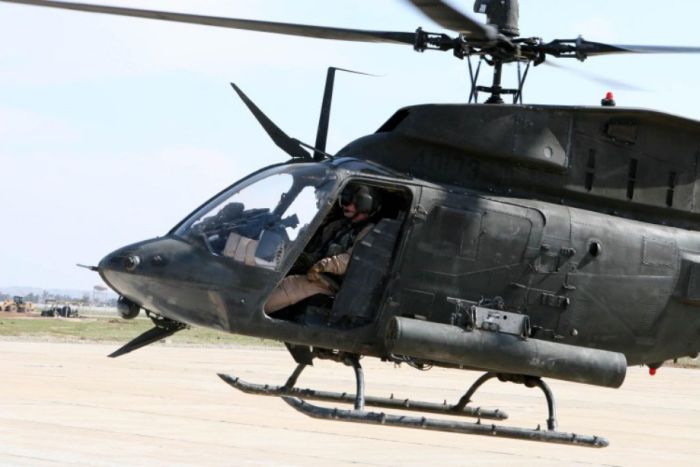|
|
Bell OH-58 Kiowa Military Helicopter
|
In early 1988, it was decided that armed OH-58D (AHIP) helicopters from the 118th Aviation Task Force would be phased in to replace the SEABAT (AH-6/MH-6) teams of Task Force 160th to carry out Operation Prime Chance, the escort of oil tankers during the Iran–Iraq War. On 24 February 1988, two AHIP helicopters reported to the Mobile Sea Base Wimbrown VII, and the helicopter team ("SEABAT" team after their callsign) stationed on the barge returned to the United States. For the next few months, the AHIP helicopters on the Wimbrown VII shared patrol duties with the SEABAT team on the Hercules. Coordination was difficult, but despite frequent requests from TF-160, the SEABAT team on the Hercules was not replaced by an AHIP detachment until June 1988. The OH-58D helicopter crews involved in the operation received deck landing and underwater survival training from the Navy.
In November 1988, the number of OH-58D helicopters that supported Task Force 118 was reduced. However, the aircraft continued to operate from the Navy's Mobile Sea Base Hercules, the frigate Underwood, and the destroyer Conolly. OH-58D operations primarily entailed reconnaissance flights at night, and depending on maintenance requirements and ship scheduling, Army helicopters usually rotated from the mobile sea base and other combatant ships to a land base every seven to fourteen days. On 18 September 1989, an OH-58D crashed during night gunnery practice and sank, but with no loss of personnel. When the Mobile Sea Base Hercules was deactivated in September 1989, all but five OH-58D helicopters redeployed to the continental United States.
• RAID
In 1989, Congress mandated that the Army National Guard would be a player in the country's War on Drugs, enabling them to aid federal, state and local law enforcement agencies with "special congressional entitlements". In response, the Army National Guard Bureau created the Reconnaissance and Aerial Interdiction Detachments (RAID) in 1992, consisting of aviation units in 31 states with 76 specially modified OH-58A helicopters to assume the reconnaissance/interdiction role in the fight against illegal drugs. During 1994, 24 states conducted more than 1,200 aerial counterdrug reconnaissance and interdiction missions, conducting many of these missions at night. Eventually, the program was expanded to cover 32 states and consisting of 116 aircraft, including dedicated training aircraft at the Western Army Aviation Training Site (WAATS) in Marana, Arizona.
|
|









